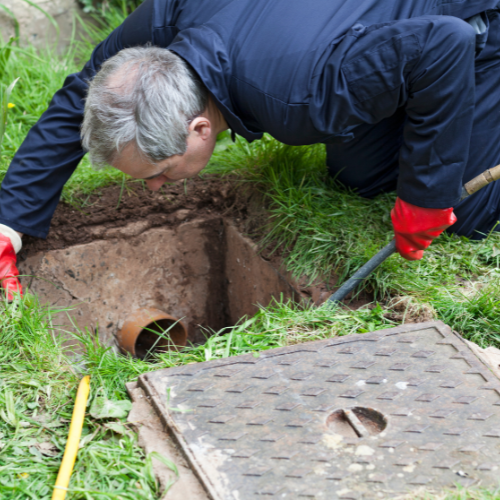How Long Do Cast Iron Sewer Lines Last, and Common Issues
Cast iron sewer lines have been widely used in plumbing systems for over a century due to their durability and strength. However, like all materials, they have a finite lifespan and can develop issues over time. Understanding how long these pipes last, the common problems they face, and what to do when these issues arise can help homeowners address potential concerns before they become serious.
Lifespan of Cast Iron Sewer Lines
On average, cast iron sewer lines can last between 50 to 100 years. The exact lifespan depends on several factors, such as the quality of the material, the installation, soil conditions, and maintenance practices. However, by the 50-year mark, many homeowners start noticing signs of wear and tear.
Common Issues with Cast Iron Sewer Lines
Over time, cast iron pipes are subject to various issues that can lead to significant damage if not addressed promptly. Read about the most common problems below.
Sewer Line Bellying
Sewer line bellying occurs when a section of the pipe begins to sag or dip, often due to soil shifting or improper installation. This can cause wastewater and debris to accumulate in the belly of the pipe, leading to clogs and slow drainage.
Signs of Sewer Line Bellying:
Slow-draining sinks and toilets
Frequent clogs or backups
Gurgling sounds in pipes
Tree Root Intrusion
Tree roots naturally seek out water sources, and your sewer line can be an attractive target. Roots can infiltrate the joints and cracks in cast iron pipes, causing blockages or even breaking the pipe entirely.
Signs of Tree Root Intrusion:
Slow drainage or frequent backups
Unpleasant odors from drains
Wet spots in your yard, particularly near trees
Unusually lush vegetation over the sewer line
Corrosion and Rust
Cast iron is prone to rust over time, especially when exposed to moisture and acidic soils. Corrosion can weaken the pipe walls, leading to leaks, cracks, and eventually, pipe failure.
Signs of Corrosion:
Rusty water from faucets
Frequent leaks
Visible rust around pipe joints
Cracks and Leaks
As cast iron ages, it becomes brittle and can crack under pressure or due to shifting soil. Even small cracks can lead to leaks that go unnoticed until they cause significant water damage or mold growth.
Signs of Cracks and Leaks:
Persistent sewage smells
Mold or mildew in your home
Puddles or wet areas near the foundation
What to Do When Problems Arise
If you suspect issues with your cast iron sewer line, it’s crucial to take action quickly to prevent further damage. Here are steps you can take:
Schedule a Professional Inspection
A professional plumber can use specialized cameras to inspect the inside of your sewer line and identify the root cause of the issue. This non-invasive method helps pinpoint problems like bellying, tree root intrusion, or cracks.
Consider Repair or Replacement Options
Depending on the severity of the problem, your plumber may recommend a repair or a full pipe replacement. Minor issues like tree root intrusions can sometimes be resolved with hydro jetting or root removal services, while more severe damage may require replacing the affected section of the pipe.
Pipe Relining: A cost-effective alternative to replacing the entire sewer line, this method involves inserting a new liner into the damaged pipe, creating a smooth inner surface without the need for excavation.
Trenchless Pipe Replacement: If the pipe is beyond repair, trenchless technology allows for a new pipe to be installed without extensive digging, minimizing disruption to your yard.
Prevent Future Issues
Preventive maintenance can help extend the life of your cast iron sewer line and avoid costly repairs down the road. Regular inspections, cleaning, and being mindful of what you flush down your drains can make a big difference.
Avoid flushing non-degradable items like wipes, paper towels, and grease.
Schedule routine cleanings to keep the pipes clear of debris and buildup.
If you have trees near your sewer line, consider installing root barriers or regularly treating the line to prevent root intrusion.
Conclusion
Cast iron sewer lines are durable, but they aren’t immune to damage from factors like age, shifting soil, and tree roots. If you notice any signs of trouble, acting quickly can help mitigate the damage and save you from costly repairs. Regular maintenance, inspections, and early intervention can significantly extend the life of your sewer system.

